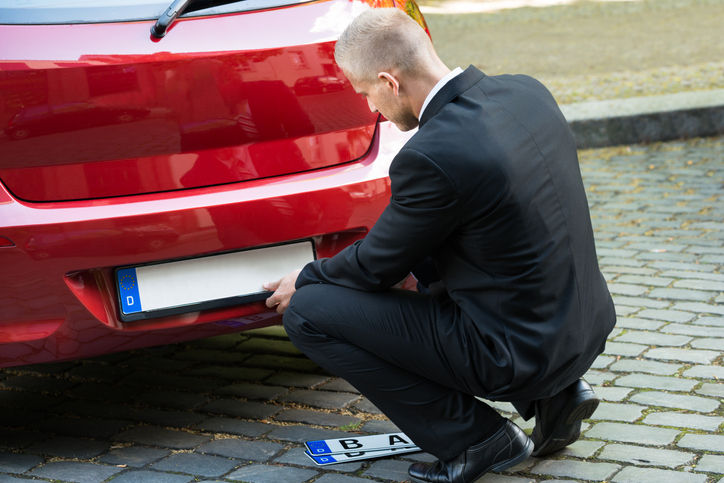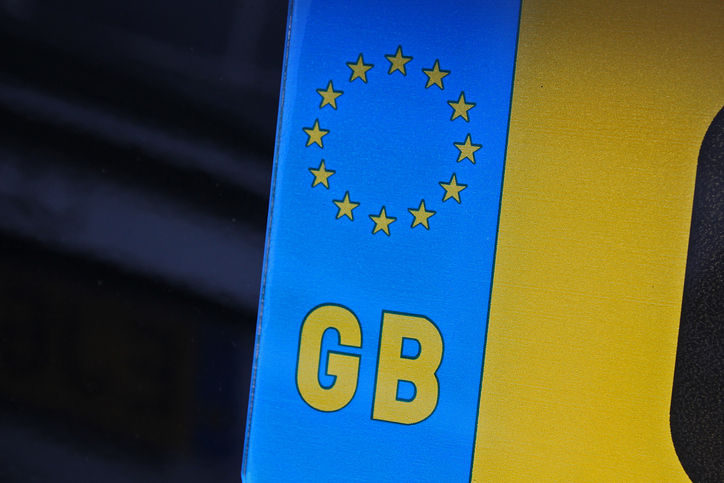If you’ve ever spotted a number plate with what looks like the name of an individual or business, a specific date, or something with hidden personal meaning, the chances are that you are looking at a personalised or private number plate.
Considered by many to be the epitome of luxury, and a way of making your car stand out on the streets and outside the home, private number plates are easier than you might think to come by – but it’s important to make sure you get them from a reputable and established source.
In this article we look at the different avenues to get your hands on a private number plate of your own choice or design, and what you need to do before your car can hit the streets with its new identity.
Option 1: Buy a private number plate from the DVLA
DVLA operates a personalised number plate service, whereby they invite vehicle owners to use the online platform to search for their ideal personalised number plate and browse through the various options and iterations of their ideal plate which are available.
Upon entering your ideal number plate, you will be shown a selection of options that range in style, in the use of letters and numbers, and in layout. There will be two different buyer options available from there: the first of which contains a selection of instantly available number plates you can purchase. The second option is to register for an upcoming auction, where currently owned and existing private number plates are up for resale – often with a starting bid amount and a set period of time for bidders to act.
Option 2: Buy a private number plate from a private seller
The alternative avenue for drivers seeking a private number plate for their car is to reach out and purchase directly from a private seller. It is important to note, before we explore this option further, that private sellers cannot just hand over a plate but will also need to transfer the number to your vehicle for you. If they don’t do this, make sure you ask for the V750 form.
These forms are what allow you to transfer the number plate to yourself, so it’s important to make sure you get this.
Depending on the seller and the number plate, the cost of a private plate can vary hugely – from the hundreds up into the thousands.
What you need to do to legally register your new number plate
Assigning the private plate to your car or vehicle
It is not enough to simply pay for and attach a private number plate to your car. You must also assign the plate to your vehicle, which is something that some dealers will do for you – or, if not, you can do this using your V750 or V778 form. The V750 is the certificate you will receive if you buy a private number plate, while the V778 retention document should be used if you are moving a number plate between vehicles you already own.
Using these, you must then apply through the online portal on the UK government website. And if you already use a private number plate and want to replace it with a new one, don’t forget to apply to remove the current one first!
What to look out for after assigning the plate to your car
Once you have completed and sent off your application, you should receive a new logbook for your vehicle and its existing MOT data, to prove that your car has undergone the correct service checks and works.
Who should you tell about your new number plate?
Top of the list should be your insurance company, followed by any other services you use which are linked directly to your vehicle number plate. This can include car park apps, charges for different areas and routes such as Congestion or ULEZ, and other automatic payment services.
Renewing or replacing an existing private number plate
Unfortunately, simply purchasing and owning the number plate is not the end of the road for private users.
If you own a private number plate but do not use it, it must be renewed every ten years, or it will be considered unused, and you will lose the right to use that number plate. For number plates that were purchased prior to 2015, the renewal date may be more frequent than 10 years so be sure to check your V750 or V778 form.
Another obstacle can occur in the form of a lost or stolen private number plate. If you fall foul of either of these circumstances, provided you have the right to the number plate with an up-to-date V750 or V778 then you will be able to apply for a replacement.
The Do’s and Don’ts of displaying your private number plate
Finally, to the fun bit – showing off your new investment and giving your vehicle that high end and luxurious finish in the form of a private number plate.
A number plate in the UK must always be fitted with a reflective material, displaying black colour on a white background at the front of your vehicle, and a yellow background on the rear of the vehicle. It is also important that number plates – personalised or otherwise – are marked with a British Standard number. Since September 2021, this number is BS AU 145e.
Numbers and letters must not be reflective, and for those who tow machinery or work with any form of the tow bar, remember that the trailer must display the same number plate as the vehicle. The UK government provides details about these rules, regulations, and suggestions.
Considered by many to be a must-have on their vehicle, private number plates present a means of making your vehicle your own. Not only that, but they are often used to showcase status, and can be a great way to really optimise your business presence across commercial or private business vehicles.
Is a private number plate the kind of luxury that you’re looking to invest in? There’s no better time than now to get started and find your perfect personalised plate.

